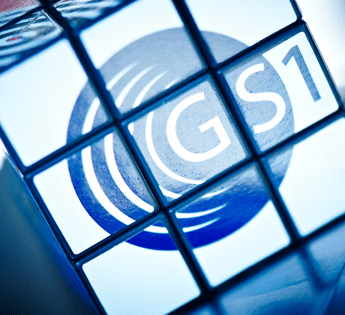Relevant information from the EU and WHO
-
The EU decided that EU-wide rules were necessary based on the significant cross border trade of tobacco products and the risk of diverging national legislation
-
The WHO (World Health Organization) Framework Convention on Tobacco Control and the Protocol to Eliminate Illicit Trade in Tobacco Products were developed in response to the growing illicit trade in tobacco products, often across borders, which poses a serious threat to public health

-
Data Capture Specifications for EU 2018/574 Unique Identifiers
-
GS1 Specifications for aggregate level UIs generated directly by economic operators can be found within Secondary Repository (Dentsu) Clarifications on Reporting Unique Identifiers, Section 1.2.2.
-
The EU Secondary Repository operated by Dentsu now includes specifications inclusive of GS1 EPCIS and EDI XML standards as well as GS1’s algorithm/flat-file specifications. Version 1.3 of Dentsu’s technical specifications and Common Data Dictionary incorporate these important changes. Today, GS1 Data Sharing standards are the only open, international standards for data exchange supported by the EU Secondary Repository. This offers GS1 members the opportunity to use their existing XML messages for event and transactional data to meet EU 2018/574 regulatory requirements.
-
GS1 in Europe has published the “Recommendations for EU Regulation 2018/574 implementation while minimising retail supply chain disruption” which provide suggestions to GS1 MOs on how to minimise retail supply chain issues while correctly implementing the recent EU tobacco track and trace rules to fight against illicit trade.

GS1 FIT AIDC Standards (ID and barcode)
This application standard provides a normative GS1 response to a specific regulatory requirement. It covers identification and marking of various entities per the European Commission Implementing Regulation on technical standards for the establishment and operation of a traceability system for tobacco products. If other regulatory authorities adopt the EC approach, this application standard is intended to support their efforts and enable global interoperability.

GS1 master data standards for economic operator, facility, machine, and product (unit pack) identifier requests
The purpose of this document is to create standardised messages to create and manage the unique identification of economic operators, facilities, machines and unit-level items. In addition, there is messaging for registry responses and for message recall. The assumption is that these messages will be APIs that will interact with a registry. The information sent to the registry and received from the registry will be in the JSON format.
GS1 EPCIS Application Standard
This application standard explains how to implement the GS1 EPCIS standard to combat illicit trade, particularly in the context of EU 2018/574. This application standard leverages GS1’s existing EPCIS and CBV standards, and introduces new, FIT-specific GS1 normative content.
GS1 EPCIS and CBV (Core Business Vocabulary) Standards
GS1 Tag Data Standard
GS1's EPC Tag Data Standard (TDS) defines the Electronic Product Code (EPC), including its correspondence to GS1 keys and other existing codes. TDS also specifies data that is carried on Gen 2 RFID tags, including the EPC, user memory data, control information, and tag manufacture information.
GS1 Order EDI Message
The order message allows a buyer to order specified quantities of goods and services from a seller for a single shipment to- or from- a single location.
GS1 EDI Invoice Message
The invoice message is sent by the supplier to the customer claiming payment for goods or services that were supplied under conditions agreed by the buyer and seller.
GS1 Settlement (Pay) EDI Message
The goal of the settlement message is to send payment instructions and/or remittance information.
Public Policy Resources
Relevant information from the EU and WHO
-
The EU decided that EU-wide rules were necessary based on the significant cross border trade of tobacco products and the risk of diverging national legislation
-
The WHO (World Health Organization) Framework Convention on Tobacco Control and the Protocol to Eliminate Illicit Trade in Tobacco Products were developed in response to the growing illicit trade in tobacco products, often across borders, which poses a serious threat to public health

GS1 Guidelines
-
Data Capture Specifications for EU 2018/574 Unique Identifiers
-
GS1 Specifications for aggregate level UIs generated directly by economic operators can be found within Secondary Repository (Dentsu) Clarifications on Reporting Unique Identifiers, Section 1.2.2.
-
The EU Secondary Repository operated by Dentsu now includes specifications inclusive of GS1 EPCIS and EDI XML standards as well as GS1’s algorithm/flat-file specifications. Version 1.3 of Dentsu’s technical specifications and Common Data Dictionary incorporate these important changes. Today, GS1 Data Sharing standards are the only open, international standards for data exchange supported by the EU Secondary Repository. This offers GS1 members the opportunity to use their existing XML messages for event and transactional data to meet EU 2018/574 regulatory requirements.
-
GS1 in Europe has published the “Recommendations for EU Regulation 2018/574 implementation while minimising retail supply chain disruption” which provide suggestions to GS1 MOs on how to minimise retail supply chain issues while correctly implementing the recent EU tobacco track and trace rules to fight against illicit trade.

GS1 Standards
GS1 FIT AIDC Standards (ID and barcode)
This application standard provides a normative GS1 response to a specific regulatory requirement. It covers identification and marking of various entities per the European Commission Implementing Regulation on technical standards for the establishment and operation of a traceability system for tobacco products. If other regulatory authorities adopt the EC approach, this application standard is intended to support their efforts and enable global interoperability.

GS1 master data standards for economic operator, facility, machine, and product (unit pack) identifier requests
The purpose of this document is to create standardised messages to create and manage the unique identification of economic operators, facilities, machines and unit-level items. In addition, there is messaging for registry responses and for message recall. The assumption is that these messages will be APIs that will interact with a registry. The information sent to the registry and received from the registry will be in the JSON format.
GS1 EPCIS Application Standard
This application standard explains how to implement the GS1 EPCIS standard to combat illicit trade, particularly in the context of EU 2018/574. This application standard leverages GS1’s existing EPCIS and CBV standards, and introduces new, FIT-specific GS1 normative content.
GS1 EPCIS and CBV (Core Business Vocabulary) Standards
GS1 Tag Data Standard
GS1's EPC Tag Data Standard (TDS) defines the Electronic Product Code (EPC), including its correspondence to GS1 keys and other existing codes. TDS also specifies data that is carried on Gen 2 RFID tags, including the EPC, user memory data, control information, and tag manufacture information.
GS1 Order EDI Message
The order message allows a buyer to order specified quantities of goods and services from a seller for a single shipment to- or from- a single location.
GS1 EDI Invoice Message
The invoice message is sent by the supplier to the customer claiming payment for goods or services that were supplied under conditions agreed by the buyer and seller.
GS1 Settlement (Pay) EDI Message
The goal of the settlement message is to send payment instructions and/or remittance information.







